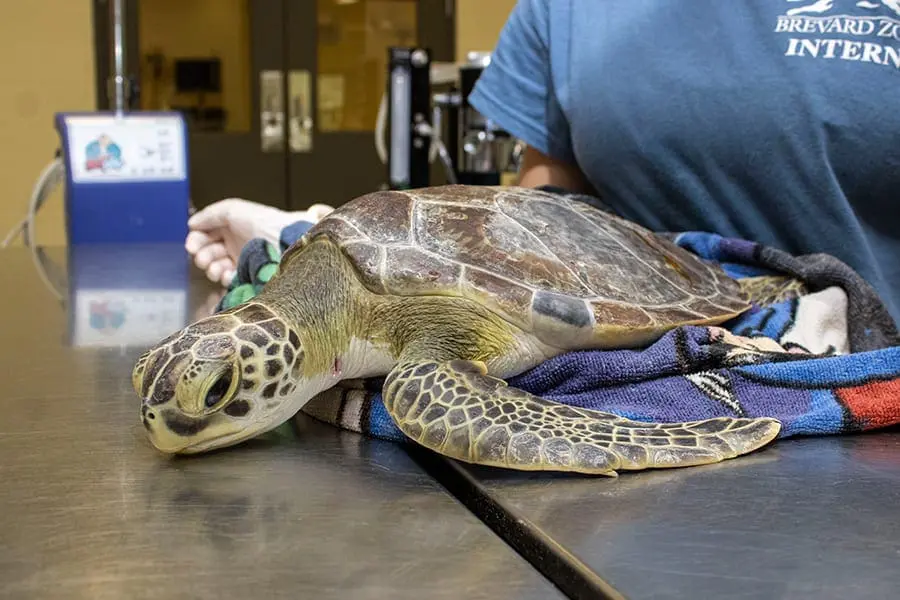

Schnitzel rocked this accessory for five months before it was time to have it removed.
The patients who come into our Sea Turtle Healing Center generally aren’t feeling their best. On occasion, we notice that a sea turtle is either too debilitated to eat or physically cannot consume their diet. Fortunately, we have a solution: an esophagostomy tube (or e-tube), which is commonly used for domestic animals like cats and dogs with similar issues.
Installing an e-tube requires anesthesia and a brief surgical procedure to place the device through the side of the patient’s neck and into their esophagus. Once radiographs confirm the correct placement of the tube, it is sutured into place. This is considered a low-risk procedure that has great health benefits for the patient in question.
To feed these patients, we whip up a special gruel made of balanced ingredients like fish, clams, bell peppers and dandelion greens and inject this mixture into the sea turtle’s e-tube. A patient with an e-tube may be fed multiple times per day depending on their health and caloric requirements.

Feeding time!
Juvenile green sea turtle Schnitzel arrived in our care back in September after being found floating and lethargic in Port Canaveral. Upon arrival, we discovered that Schnitzel had developed oral emphysema, which caused an unwillingness to eat and sustained weight loss. Schnitzel was given an e-tube, and, sure enough, this patient started gaining weight right away.
After five months of sporting the accessory, Schnitzel had their e-tube removed this week! The removal process is quick and straightforward—the suture is snipped and the tube is taken out. The insertion site in the esophagus is so small that it does not need to be closed, which means an easy healing process for the sea turtle.

Tube-free! The tiny hole left behind by the e-tube was flushed out and will heal on its own.
Schnitzel is not the first sea turtle we have used an e-tube on. In fact, our veterinary team has also placed e-tubes in a Victoria crowned pigeon and several gopher tortoise patients at Florida Wildlife Hospital!
Keep up with the Meet the Patients section of our blog for more updates about Schnitzel and the rest of our current patients.
